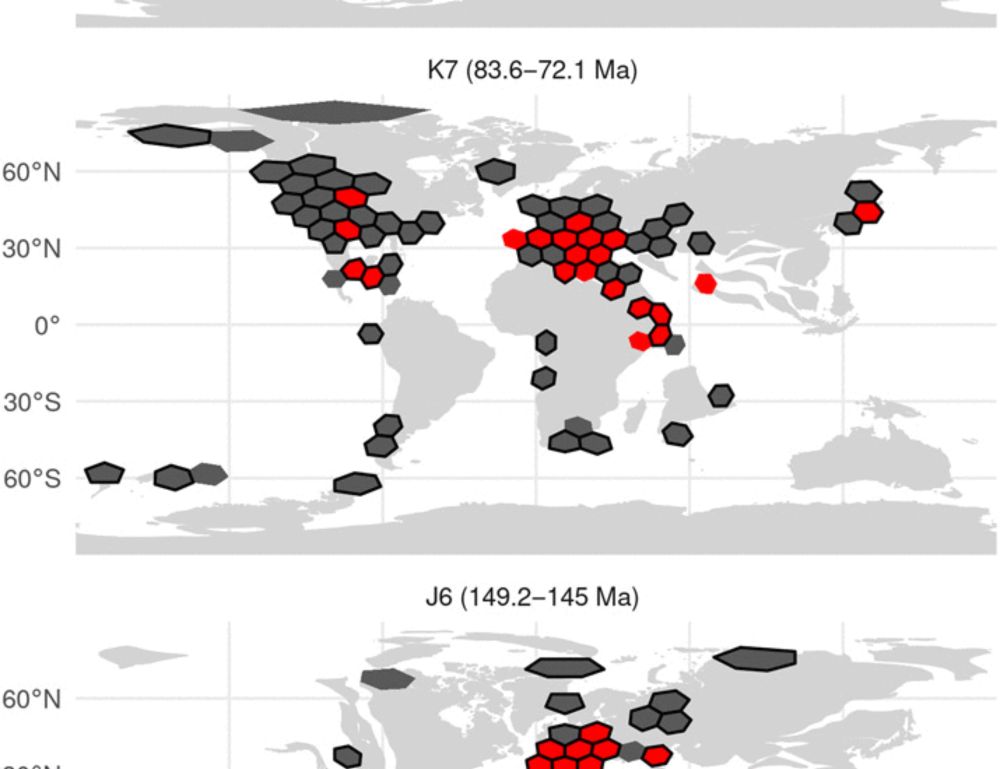#Paleoclimate, short-term #climate variability 🌦️, mollusks🐚, #running, popular #science, #gamer, plant-based #vegan 🌱
Sharing new #paleoclimate, #geology and #sclerochronology #science papers + own results
bg.copernicus.org/articles/22/...

bg.copernicus.org/articles/22/...
www.nature.com/articles/s41...

www.nature.com/articles/s41...
By 2100, these changes could increase by 17%, affecting 80% of the global population.
www.nature.com/articles/s41...

By 2100, these changes could increase by 17%, affecting 80% of the global population.
www.nature.com/articles/s41...
cp.copernicus.org/articles/21/...

cp.copernicus.org/articles/21/...
Link: www.cell.com/trends/biote...

Link: www.cell.com/trends/biote...
vu.nl/en/news/2025...
vu.nl/en/news/2025...
www.sciencedirect.com/science/arti...

www.sciencedirect.com/science/arti...
doi.org/10.1126/scia...

doi.org/10.1126/scia...
egusphere.copernicus.org/preprints/20...

egusphere.copernicus.org/preprints/20...
www.science.org/content/arti...

www.science.org/content/arti...
Proud to be part of this work led by Alex Quizon & Sierra Petersen where we show that most snails (we tested) precipitate their shells in isotopic equilibrium with seawater, enabling climate reconstructions like the one published earlier this week.
www.sciencedirect.com/science/arti...

Proud to be part of this work led by Alex Quizon & Sierra Petersen where we show that most snails (we tested) precipitate their shells in isotopic equilibrium with seawater, enabling climate reconstructions like the one published earlier this week.
www.sciencedirect.com/science/arti...
egusphere.copernicus.org/preprints/20...

egusphere.copernicus.org/preprints/20...
Very excited to share our more recent paper published today in @nature.com Communications, where we show based on #clumped #isotope measurements in a giant sea #snail 🐚 that Europe experienced a monsoon-like climate during the #Eocene high-CO2 period.
www.nature.com/articles/s41...

Very excited to share our more recent paper published today in @nature.com Communications, where we show based on #clumped #isotope measurements in a giant sea #snail 🐚 that Europe experienced a monsoon-like climate during the #Eocene high-CO2 period.
www.nature.com/articles/s41...
www.science.org/content/arti...

www.science.org/content/arti...
www.sciencedirect.com/science/arti...

www.sciencedirect.com/science/arti...
bg.copernicus.org/articles/22/...

bg.copernicus.org/articles/22/...

www.nature.com/articles/s41...

www.nature.com/articles/s41...
www.sciencedirect.com/science/arti...

www.sciencedirect.com/science/arti...
www.science.org/doi/10.1126/...

www.science.org/doi/10.1126/...
doi.org/10.1073/pnas...

doi.org/10.1073/pnas...
www.sciencedirect.com/science/arti...

www.sciencedirect.com/science/arti...
pubs.rsc.org/en/content/a...

pubs.rsc.org/en/content/a...



